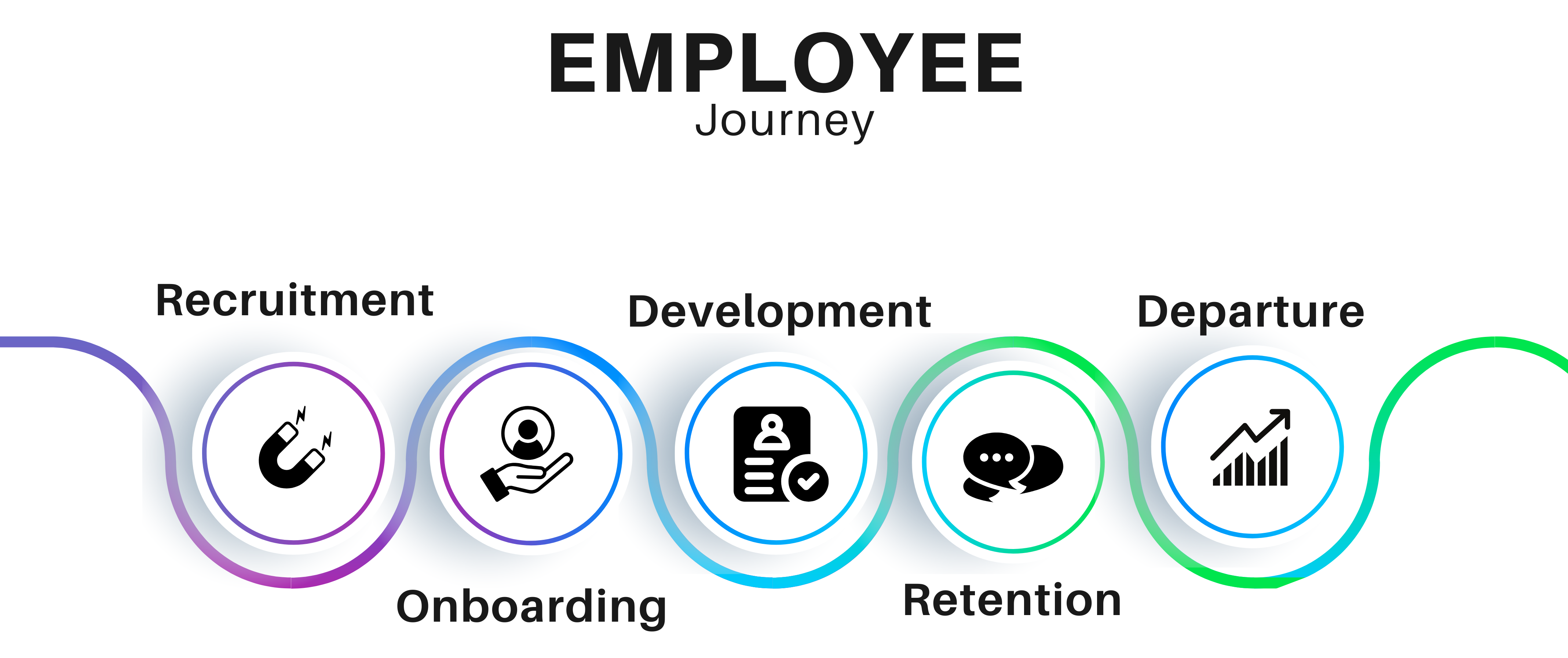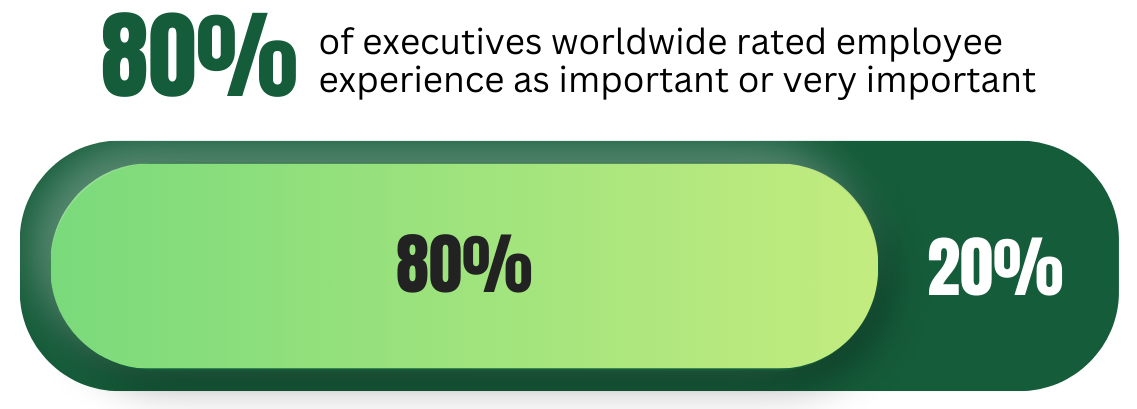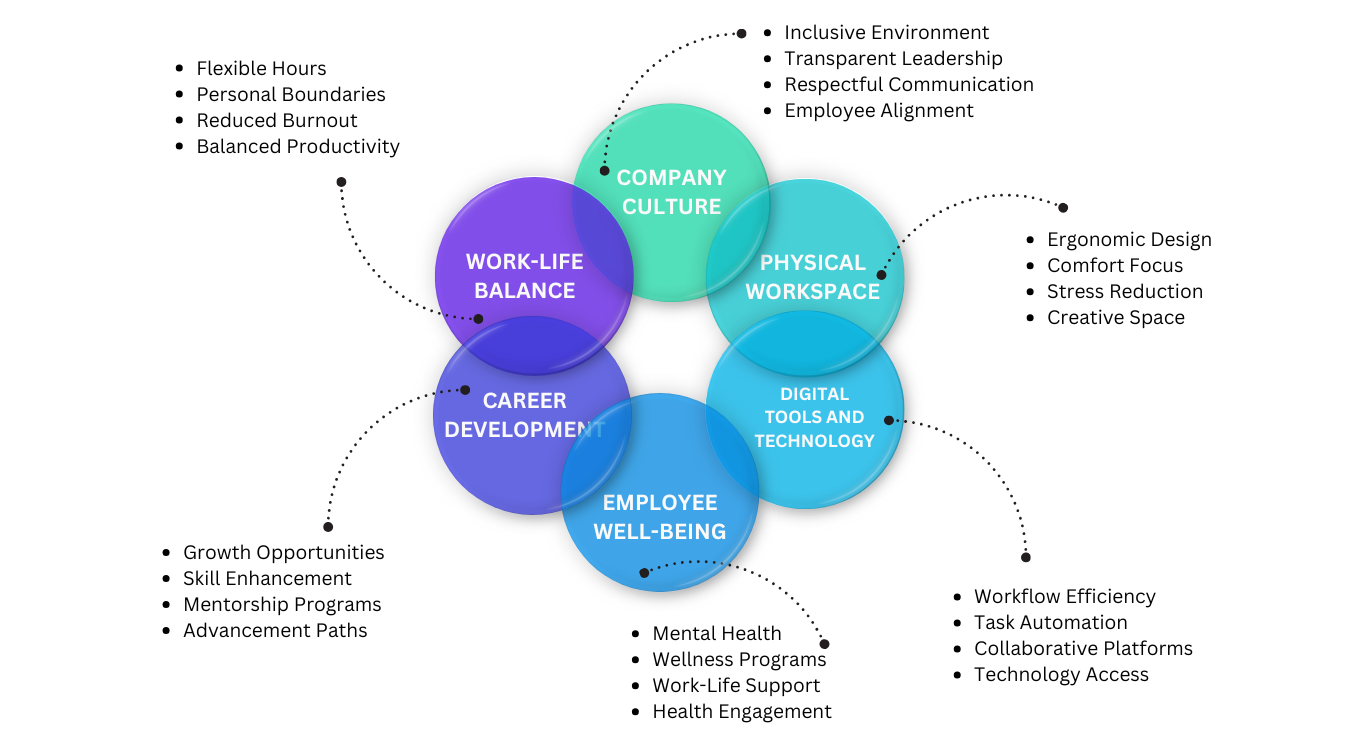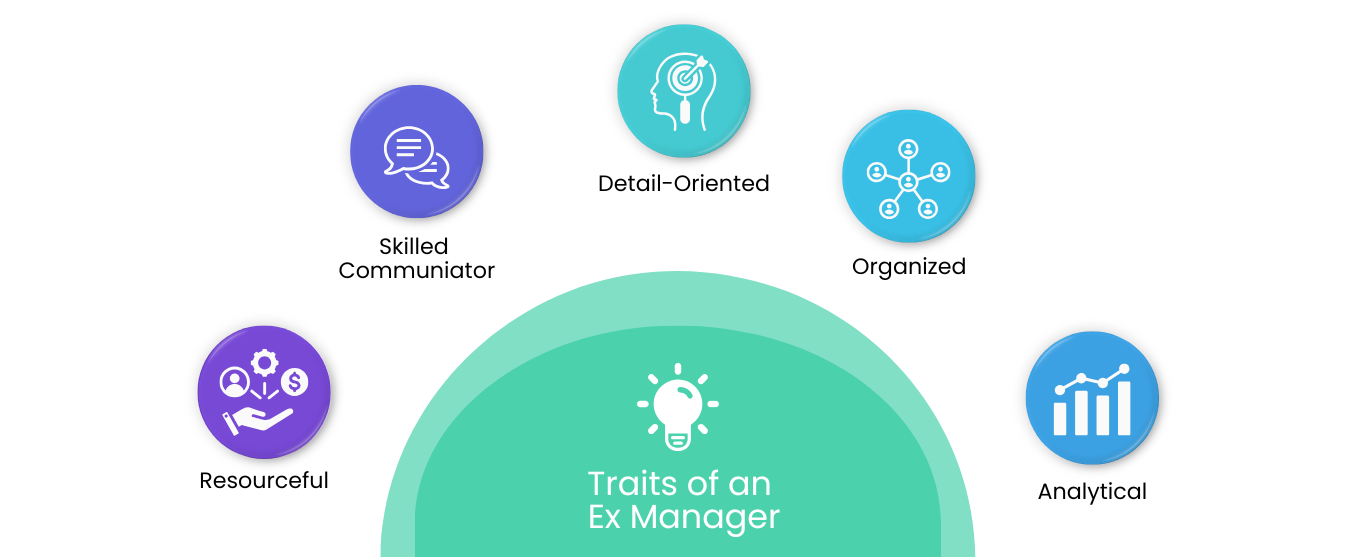
What is Employee Experience Management? A Guide to Improving the Modern Workplace
Attracting and retaining top talent is one of the biggest challenges any organization faces. The last thing you want is to lose your valuable employees because of internal issues that could have been addressed. This is where focusing on employee experience makes all the difference.
By investing in a strategy that treats employees with the same care and attention as your customers, you create a more engaged and motivated workforce. Improving key processes, providing the right workforce management tool, like employee monitoring software, time tracking software, etc. and optimizing workflows, not only reduce turnover but also increase productivity and morale across the board.
Sounds promising, right? This is exactly why we’re introducing Employee Experience Management, the key to preventing employee fallout, increasing satisfaction, and building an ideal work environment.
What is Employee Experience Management?
Employee Experience Management (EXM) is a strategic approach that focuses on improving the overall experience of employees throughout their journey within an organization. It involves understanding, measuring, and optimizing the different interactions, touchpoints, and moments that matter to employees, from recruitment to departure, in order to create a positive, engaging, and fulfilling work environment.
The purpose of EXM is to enhance employee satisfaction, thereby bringing changes to low employee productivity, engagement, and retention. By creating a positive employee experience, organizations can improve overall performance, reduce turnover, foster a strong company culture, and attract top talent.
Overview of the Employee Lifecycle in Employee Experience Management


Recruitment
This is the first touchpoint in the employee journey. It includes attracting, screening, and hiring the right talent for the organization. EXM during recruitment focuses on ensuring that candidates have a seamless, transparent, and engaging experience throughout the hiring process.

Onboarding
Onboarding is the process of integrating a new employee into the organization. A good onboarding experience helps employees feel welcomed, prepared, and informed about their roles and the company culture. EXM here ensures that the new hire’s transition is smooth, with clear expectations, necessary tools, and support.

Development
This phase involves providing employees with opportunities for growth, skill development, and career progression. EXM during development focuses on creating an environment that fosters learning, skill-building, and career advancement. This can include mentorship programs, training, and feedback loops that allow employees to feel supported in their growth.

Retention
Retention is about keeping employees engaged, satisfied, and motivated to stay within the organization. Employee Experience Management in this stage involves regularly measuring employee satisfaction, offering competitive compensation and benefits, promoting work-life balance, and maintaining a positive organizational culture to ensure that employees remain committed to the company.

Departure
This is the final phase when an employee leaves the organization, whether due to retirement, resignation, or termination. EXM in this stage focuses on ensuring a respectful and smooth exit, with exit interviews and feedback collection to understand why employees leave and learn from those insights to improve the experience for others.
How EXM Parallels Customer Experience Management (CXM)?
Employee Experience Management (EXM) mirrors Customer Experience Management (CXM) in several key aspects. Both focus on building strong relationships ,CXM with customers and EXM with employees by understanding and meeting their needs. Personalization is central to both, with CXM customizing experiences for customers and EXM tailoring employee journeys based on individual preferences and feedback.
Engagement is crucial for both: positive experiences lead to customer loyalty in CXM and greater employee satisfaction and retention in EXM. Feedback loops, such as surveys and reviews, help both processes gather insights to improve and adapt over time. Ultimately, EXM and CXM are continuous efforts to create positive, personalized, and engaging experiences that drive long-term success and loyalty.
Why is Employee Experience Management(EXM) Important?


Impact on Employee Satisfaction and Productivity
EXM creates a positive work environment, increasing engagement, motivation, and productivity while reducing stress and burnout.

Role in Attracting and Retaining Top Talent
A strong EXM promotes a positive employer brand, attracting top talent and improving retention through career development, recognition, and job satisfaction.

Link Between EXM and Organizational Success
EXM leads to better customer service, increased innovation, teamwork, and adaptability, driving business growth and long-term success.
EXM increases satisfaction, attracts and retains talent, and supports organizational success through improved performance, culture, and innovation.
Key Components of Employee Experience


Company Culture
A positive company culture fosters inclusivity, transparency, and respect, improving employee morale. It encourages open communication and collaboration. A strong culture also enhances retention and aligns employees with organizational goals.

Physical Workspace
Comfortable and ergonomic workspaces improve employee well-being and productivity. A well-designed environment reduces stress and supports focus. Flexibility in the workspace enhances creativity and teamwork.

Digital Tools and Technology
Digital tools simplify workflows and enhance communication. They improve efficiency by automating tasks and facilitating collaboration. Access to the right technology ensures employees can perform their best in a digital-first world.

Employee Well-being
Supporting mental and physical health is crucial for productivity and job satisfaction. Wellness programs and support systems promote work-life balance. Healthy employees are more engaged and perform better.

Career Development
Opportunities for growth and learning help employees feel valued and motivated. Offering training, mentorship, and career advancement paths fosters long-term loyalty. Development programs increase skills and job satisfaction.

Work-life Balance
Promoting work-life balance reduces burnout and increases employee retention. Flexible work arrangements allow employees to manage personal and professional responsibilities. Balance enhances overall work productivity and well-being.
Who is an Employee Experience Manager?
An Employee Experience Manager focuses on enhancing the overall work experience for employees throughout their lifecycle, from hiring and onboarding to exit interviews. Unlike HR managers, who handle legal, compensation, and administrative duties, employee experience managers prioritize the quality of employees’ day-to-day work experiences and foster a positive workplace culture.
What Does an Employee Experience Manager Do?
An Employee Experience Manager (EXM) is responsible for shaping and improving the overall experience of employees within a company. The role involves a deep focus on engagement, satisfaction, and retention across every stage of the employee lifecycle. Key responsibilities include:

Collaborating with Departments
The Employee Experience Management works cross-functionally with HR, leadership, and other departments to ensure the employee experience aligns with the organization’s strategic goals and values.

Overseeing Employee Lifecycle Stages
The Employee Experience Management is involved from the moment an employee joins the company (onboarding) through their career development, all the way to offboarding. Their goal is to ensure a positive experience at every touchpoint.

Gathering and Implementing Feedback
Regularly collecting feedback from employees through surveys, focus groups, and one-on-one interviews, then translating this feedback into actionable strategies to improve the workplace.

Bringing Initiatives to Align with Company Culture
Ensuring that employee experience initiatives reflect and reinforce the company’s core values and culture, creating an environment where employees feel engaged and aligned with the organization’s purpose.

Guide For Developing an Effective Employee Experience Strategy

Assess Current Employee Experience
The first step in developing a strategy is to assess the current state of employee experience. This can be done by using surveys, engagement metrics, and one-on-one feedback to identify strengths and areas for improvement.

Define Objectives and Goals
The next step is to align the employee experience strategy with the company’s mission and values. Clear goals should be set, such as improving low employee engagement, enhancing well-being, or fostering a more inclusive work culture.

Design Initiatives
Create specific programs and initiatives aimed at addressing the identified needs. These could include wellness programs, leadership development opportunities, or initiatives focused on improving communication within teams.

Allocate Resources and Responsibilities
For a strategy to be successful, resources (budget, tools, training) must be allocated appropriately. Additionally, assigning ownership and accountability to ensure initiatives are executed effectively is crucial.

Monitor and Improve
The strategy should be dynamic, not static. Regular monitoring, using surveys or data analysis, helps assess the effectiveness of initiatives. Continuous improvement is key to keeping the employee experience relevant and impactful.
Using Technology in Employee Experience Management
Technology plays a key role in improving the employee experience by optimizing communication, task management, and performance tracking. Employee Experience Management focuses on creating a positive environment by engaging employees, providing them with the necessary tools, and enhancing their overall work journey.
Tools for Communication and Task Management

Instant Messaging and Collaboration Platforms
Slack, Microsoft Teams, and Zoom allow for easy communication, instant messaging, and real-time collaboration. These tools support not only messaging but also file sharing, video conferencing, and team channels that facilitate a collaborative environment.

Task and Project Management Software
Asana, Trello, Monday.com, and Jira help teams track and manage tasks effectively. These workforce management softwares help employees stay organized, prioritize work, set deadlines, and ensure team members are aligned on goals.

Employee Engagement Platforms
Tools like Statily allow employees to provide continuous feedback and track their activities through app and URL tracking, as well as optional screenshots. These features enable managers to effectively measure engagement levels, while also tracking working hours & attendance, leave management, and shift scheduling.
Benefits of Employee Management Apps
Simplified Processes:

Automation: Employee management apps automate routine tasks like scheduling, performance reviews, and payroll processing, which reduces human error and frees up time for more critical activities.

Integrated systems: These apps consolidate all aspects of employee management, including recruitment, onboarding, task allocation, and performance evaluation into a single platform, making it easier for managers and HR teams to oversee.
Enhanced Accessibility to Training and Resources:

Learning Management Systems (LMS): There are many apps provide employees with easy access to courses, certifications, and training modules.

Self-paced Learning: Many employee management apps allow employees to access training material at their convenience, thus promoting continuous development and knowledge building.
Data-Driven Decision Making:

Employee management apps use data to offer insights on employee performance, engagement, and productivity. Managers can use this data to improve employee development, improve workflow processes, and optimize team dynamics.
Personalized Employee Experience:

By tracking preferences, work patterns, and feedback, Employee Experience Management tools can provide a personalized experience, improving job satisfaction and retention. Many apps offer features such as personalized benefits, easy scheduling, and self-service portals for employees.
Examples of AI and Analytics in EXM
AI-Powered Recruitment

Tools can use AI algorithms to assess candidates’ skills, cognitive abilities, and cultural fit, simplifying the recruitment process and improving the quality of hires.
Employee Sentiment Analysis

There are platforms which use AI and analytics to monitor employee sentiment through surveys and feedback. This helps businesses gauge employee morale and proactively address concerns that may impact retention and productivity.
Performance Analytics

Apps can use analytics to assess employee performance. Using AI, these platforms can identify high performers, predict turnover, and assist managers in coaching and training employees based on performance trends.
Predictive Analytics for Retention

AI-powered platforms analyze data such as employee tenure, performance, and engagement to predict potential turnover risks. By identifying at-risk employees early, managers can take targeted actions to improve retention.
AI-Based Learning and Development

Many platforms use AI to suggest personalized learning paths for employees based on their job role, skills gap, and career aspirations, leading to more efficient skill development and talent growth.
Technology has revolutionized the way organizations manage and enhance the employee experience. Tools for communication, task management, and AI-driven analytics provide the foundation for simplified processes, personalized employee engagement, and data-driven decision-making.
Benefits of Effective Employee Experience Management

Better Company Culture: Positive employee experience fosters trust, collaboration, and inclusivity, improving organizational cohesion and morale.

Enhanced Performance: Engaged employees are more focused and motivated, boosting personal and team performance.

Attraction of Talent: A strong employee experience makes the company an employer of choice, attracting top talent through positive reputation and reviews.

Increased Engagement and Motivation: Valued employees are more engaged, leading to higher productivity and job satisfaction.

Higher Retention and Lower Turnover Costs: Positive experiences increase retention, reducing hiring and training costs.

Enhanced Customer Satisfaction: Engaged employees lead to better customer service, boosting satisfaction and loyalty.
Comments